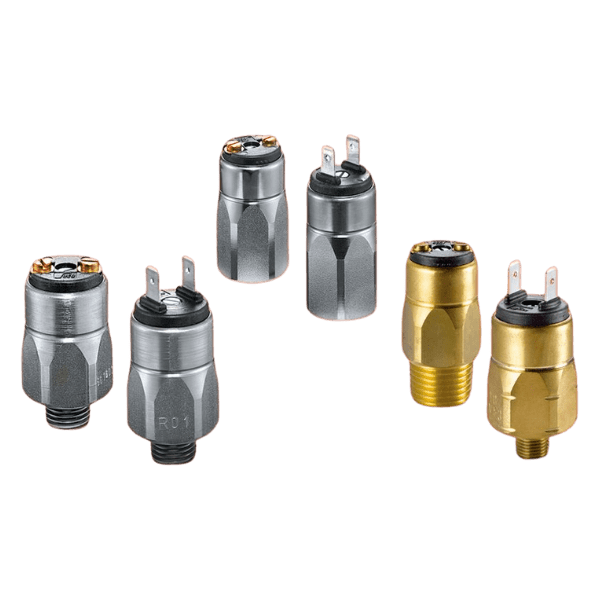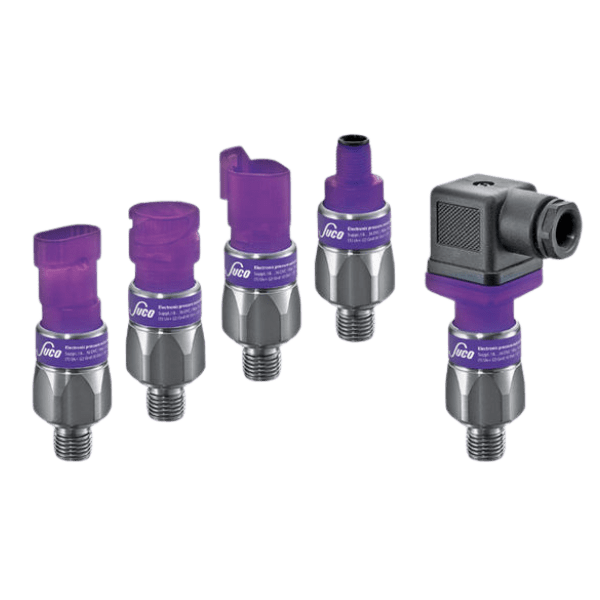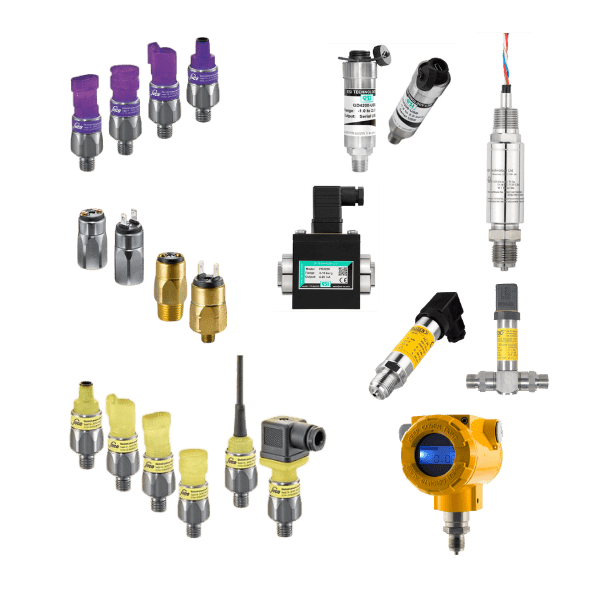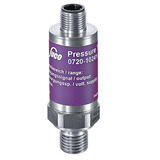
When choosing between a pressure switch and a pressure sensor, the key lies in understanding your application and how you intend to monitor or control pressure within your system. Choosing the right device helps avoid over-engineering or under-protecting your process.
Learning hubA pressure switch is a device that monitors and controls pressure in industrial systems by opening or closing a circuit once a specified pressure level is reached.


A pressure sensor (also known as a pressure transducer or pressure transmitter) measures the pressure of a gas or fluid and converts it into an electrical signal, typically received by a PLC or controller.
| Feature | Pressure Switches | Pressure Sensors |
| Functionality | On/off control - opens or closes a circuit | Continuous pressure measurement |
| Output | Binary output (above / below threshold) | Continuous analogue or digital signal (e.g. 4-20mA, 0-10 V) |
| Applications | Simple control systems | Advanced monitoring and control system |
| Types | Mechanical or electrical | Diaphragm, capacitive, piezoresistive, etc |
| Cost | Simpler design - lower cost | Higher cost due to increased functionality |
When choosing between a pressure switch and a pressure sensor, understanding their real-world applications can help clarify which is right for your system.
Pressure switches are ideal for systems that need on/off control based on pressure thresholds.
Industrial Equipment: Common in air compressors, refrigeration units, and filtration systems to automate pressure control and trigger alerts.
Machinery & Flow Systems: Used in wastewater treatment and pipeline control for system safety.
Vehicles: Monitor oil pressure and regulate air suspension systems.
Buildings: Found in HVAC units, water pumps, wells, and boiler systems to protect equipment and maintain consistent pressure.
Specialised Uses: Also used in medical oxygen systems, agricultural spraying, and marine water systems.
Pressure sensors are best for applications requiring continuous monitoring and accurate readings.
Industrial Monitoring: Essential in manufacturing, oil & gas, and water treatment for tracking and optimising pressure in real time.
Automation & HVAC: Enable precise control of actuators, hydraulics, and airflow systems.
Transport & Aerospace: Measure pressure in tyres, fuel, oil, and braking systems, as well as in aircraft cabins and hydraulics.
Medical & Robotics: Support critical functions in ventilators and robotic movement with high precision.
Emerging Tech: Used in renewable energy (hydrogen, wind) and environmental monitoring (air quality, groundwater).
Smart Buildings: Enhance building automation through pressure data in fire suppression and HVAC systems.
A pressure switch is ideal for simple on/off control based on a defined pressure threshold. It's typically used in pump control, alarm systems, and safety shutdowns where complex monitoring is unnecessary.
A pressure sensor, on the other hand, provides continuous pressure data, making it suitable for real-time monitoring, data logging, and integration into control systems like PLCs and SCADA. It’s the better choice for applications where pressure trends and precision are critical.
Consider your system's requirements and complexity:
Top Tip!
At OEM Automatic, we supply high-quality Pressure Sensors & Pressure Switches from trusted manufacturers including Suco, ESI & Aplisens. Each product is carefully selected to meet the diverse safety requirements of industrial applications.
Our pressure monitoring specialists are here to help you select the right switch or sensor, based on your specific use case.
Our Pressure & Flow team is ready to assist with expert advice, product recommendations, and proof-of-concept support.
Phone: 0116 284 9900
Email: [email protected]
Live Chat: Available on our website
Onsite Support: Book a visit from one of our experienced engineers for demonstrations and application advice - email [email protected] to arrange a visit
Let us help you find the right technology for your application. Contact us today.



